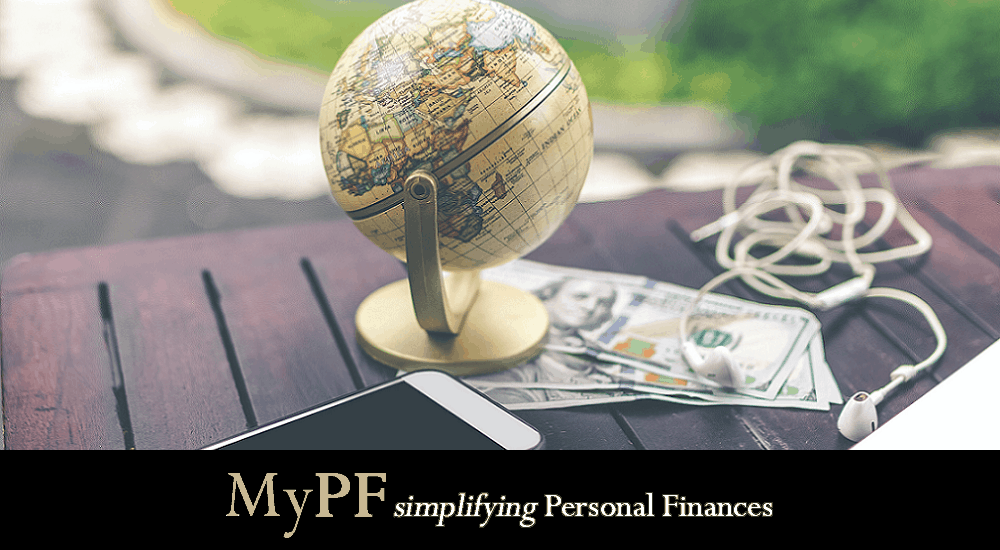Is it time for you to seize opportunities beyond our borders? The original version of this article was published on StashAway.my.
In Malaysia, investors had about 76% of their investments in Malaysian-based assets, even as Malaysian equities alone account for only 0.46% of the global stock market in 2019. In addition, Malaysians are also likely to concentrate their wealth in Malaysia through their EPF savings and property investments.
This tendency to concentrate investments in your home country is known as ‘home bias’. Malaysians may be prone to home bias for a number of reasons. Investors with home bias prefer to invest in their home countries because they feel more comfortable and familiar with the local markets. That familiarity leads investors to believe that investing locally is less risky; after all, they don’t have to deal with currency risk, for instance, if they’re only investing only in Malaysia.
But in reality, investors with home bias are actually exposing their money to more risk than they realise, and are also limiting their investments from earning the best long-run returns.
Contents
Investing only in Malaysia increases your investments’ exposure to country-specific risks
By investing solely in Malaysia, you’re overexposing your money to the risks that can specifically impact your home country. These risks include political risks, event risks and economic risks that are unique to Malaysia’s economy, and can impact several or all of the local asset classes.
In 2015, for example, the Malaysian stock market suffered massive declines as a result of highly publicized political scandals and depressed global commodity prices. The double whammy caused the Kuala Lumpur Composite Index (KLCI) to drop as much as 13%, and the Malaysian Ringgit declined up to 28% against the US Dollar that year. For Malaysian investors who held most of their investments locally, these events were a huge blow to their investment portfolios.
As a Malaysian, the majority of your net worth is likely already concentrated locally too: You may own a property in Malaysia, contribute to your EPF retirement account, and earn your income in Malaysia. Given that a lot of your assets are already linked to the Malaysian economy, investing in a portfolio that exposes a sizable chunk of your money to assets in regions, such as the US, Europe, and China, other than Singapore ensures that your portfolio isn’t overexposed to the risks that can uniquely impact any single country in your portfolio.
Investing only in Malaysia limits your investment opportunities
Investing outside Malaysia allows you to seize opportunities from a wider range of economies that are at different points in their economic cycles. In particular, your investment can capture additional long-term returns from equities in countries with strong economic growth. Having a portion of your portfolio invested in the US in 2019, for instance, would enable that portion to earn a return from the US market that you wouldn’t achieve by only investing in Malaysia.
Had you only invested in the KLCI in 2019, your investments would have drastically underperformed both the S&P 500 and the MSCI World Equity Index. The S&P 500 and the MSCI World Equity Index returned 31.3% and 28.4% respectively while the KLCI returned -3.47% in 2019.
How you can invest outside Malaysia properly
Investing outside Malaysia requires you to strategically allocate your money to the right regions at the right time. Even though the S&P 500 returned more than KLCI in 2019, that doesn’t mean you should have all of your investments in the US instead of in Malaysia.
So, how much should you have in non-Malaysian investments? Properly diversifying your investments is more nuanced than simply dividing your money equally across all countries. Effective global diversification calls for an approach that considers how each country can have different growth and risk factors, and how your investments in one country can move in tandem, or in opposite directions with your investments in another country in varying degrees.
At StashAway, this is exactly what the StashAway investment framework does. StashAway portfolios aren’t only invested globally, but their system also monitors the global macroeconomic environment and intelligently allocates your investments across different regions based on the incoming economic data. So, your StashAway portfolio will have a mix of asset classes in each region based on the economic environment of that region, and how it fits into the global economic context.
For example, when the StashAway system detected an economic slowdown in non-US economies in August 2019, StashAway re-allocated your investments to have more protective assets in that region. Recently, StashAway updated their allocations again to account for global economic uncertainty. StashAway’s intelligently-diversified portfolios also have appropriate exposure to safe-haven currencies, such as the US Dollar and Japanese Yen, that can offset the depreciating Ringgit and hedges your risk in the event of a global financial crisis.
Diversifying your investments across geographies is much more than just diversifying currencies; it’s about exposing your assets to opportunities around the world that you can’t always find in a single economy. With intelligent global exposure, not only are you seeking said opportunities, but you’re also minimizing your exposure to economic risk-events that may disproportionately affect a single economy.
StashAway x MyPF exclusive signup privileges!
- StashAway Malaysia promo code 0% fees for RM100k invested for 6 months: signup link
- StashAway Singapore promo code 50% fees for SGD50k invested for 6 months: signup link
You May Also Like
- Stashaway: Introducing New Asset Classes and Geographies
- How to StashAway
- Introducing Malaysia’s First Robo Advisory, StashAway
- StashAway x MyPF Promo
- What You Should Do with Your Investments in an Economic Slowdown
What are your thoughts about investing outside of Malaysia – yay or nay?






Leave A Comment